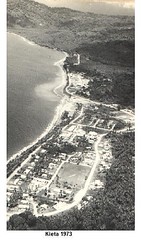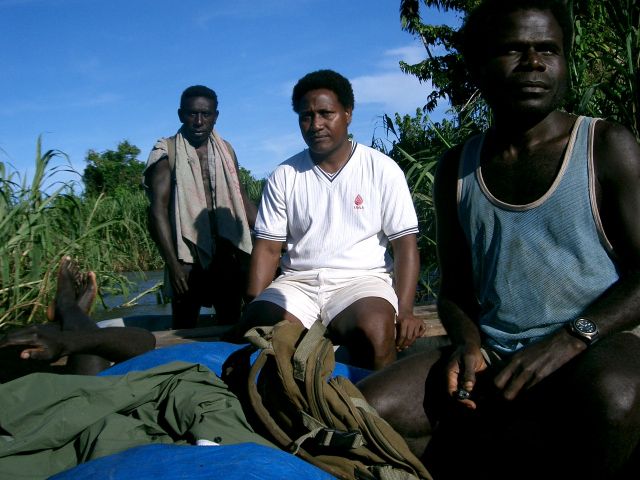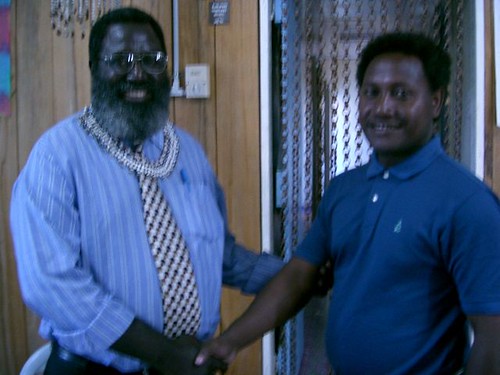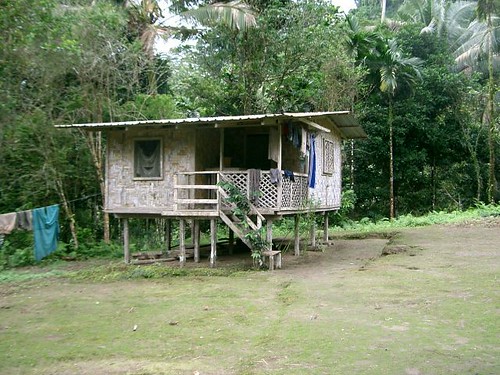
Sixty years ago, this was the centre of the Second World War in the South Pacific. There is wreckage dotted along the coastline. Japanese tourists fly in to pay homage to their fallen soldiers, particularly their naval General, Yamamoto killed near Buka. In Torakino, four hours away by boat, Enola Gay took off with the A bomb.
There are rusted skeletons of piers, wheels of bombers, children carrying sacks of cocoa beans and clusters of vigilant villagers wearing the Pacific trademark assortment of clothes – an NRL uniform, a Townsville scouts company uniform. The beach is black, from the nearby volcano which smokes sulphur from its vents. The people are deep black, like their relatives in the Solomons, to whom they historically belong, before the colonial powers drew lines on a map to separate the two nations.

Adventurous Trip – This is some of the logistical
difficulties one will encounter when you’re not on the road as there were
road blocks to go through.
´We are sitting on a gold mine. But we want to leave Bougainville as it is´ says president-elect Joseph Kabui in a meeting with Oxfam in Buka. ´When I was a boy, I swam in a crystal clean river; after the mining it is now dead´. ´We have two main priorities: economic recovery, closely followed by peace and reconciliation. This will take years, but we have lots of examples of people involved in massacres of villagers – six, ten, twenty- who have begun to make peace´. ´We believe that NGOs have an important role to play in Bougainville because they reach where government can´t. And the good work you are helping with in Paru Paru – we want to open this area up so that people can learn from this experience.´

Presidents’ – Golden Handshake between two Presidents
(Kabui & Rex (in his own right)) of Bougainville and SI.
Paru Paru. Another eight hours by boat past dolphins and crocodiles, and seven hours hiking through the thigh deep mud, mountain rivers and village gardens. There is no electicity. No cell phone coverage. Villagers use the river as a toilet and transport is by foot. Every village has at least one sick child and old people are few. But the gardens are many and kindness and friendliness abounds. Paru Paru is like a regional centre and radiates activity. It has 250 children in primary school, new outhouses and a series of mission-constructed health and education facilities. It has a Visitors Book and a past which speaks of organization during the Crisis. But it is now changing and will change even more over the next few years.

Kabui’s House – This is where Kabui and his family live
during the crisis in Central Bougainville. Village name was not known.
By Tee Kings 2005.